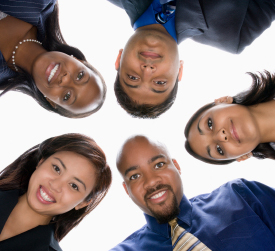
Gamification is helping a growing number of companies improve efficiency, training and innovation - among other things. If working smarter is to be the order of the day, then finding ways to engage and motivate employees will be critical to success. Gamification aims to meet that need. But to succeed, it needs good design, investment and clear aims.
Gamification is the use of gaming concepts to encourage particular behaviours in customers or employees, but also citizens or patients. Attributes of games such as fun, play, transparency, design and competition are applied to real-world processes. Its use is growing, thanks to a combination of trends including the growth of smartphones and cloud computing; the growing science of motivation and neuro-science; changing expectations among the workforce and the need to innovate.
Gamification comes in many forms, using a variety of tools and techniques, such as ‘recommended for you’ - familiar to almost anyone who has shopped online. Almost anything can be gamified to a greater or lesser extent and the list of applications and success stories continues to grow: areas such as fitness programmes, training/ skills development, sales, housework, pain control, recycling, innovation.
But, views of gamification vary. Some sees it as the next big thing; others as over-hyped; others still as verging on evil in its potential to exploit and spy on people. Time will tell. M2 Research recently forecast a sector worth $2.8 billion in 2016 rising to $5.5 billion by 2018 to include all the apps, tools and services. Gartner also sees growth, and estimated that between 2012 and 2014 the number of global companies using at least one form of gamification had more than trebled. Gamification has, however, also recently reached the peak of Gartner’s hype cycle, meaning that harsh realities are probably about to set in.
Gamification is not a panacea. It needs careful design, clear recognition of the aims, alignment with organisational culture and objectives, understanding of the motivations of users, and clear measures of success if the investment is not to fail after a short period of success. And Gartner estimated in 2012 that as many as 80% of applications would fail to meet their original aims.
But the idea of gamification appeals. In a 2011 survey, the idea of making everyday activities more like a game appealed to nearly two thirds of respondents. While Millennials are often the focus of attention in changing approaches in the workplace, Gen Xers were the most likely to agree – nearly three quarters of them did so. An element of competition, although less popular, still scored 51% overall and 61% among Gen Xers in the survey.
Gamification can activate a variety of psychological and motivational triggers. Getting the balance right is critical to success and a growing body of literature discusses the topic. One of the original typologies, based on Multi User Dungeons, used 4 categories - Achievers who wanted to win; Explorers who wanted to learn; Socialisers who wanted to help others; and Killers who wanted to dominate. Others have taken this further designing in many different characteristics such as collecting as a means to build relationships, meaning - by feeling part of something bigger, prizes for achievement.
Companies as diverse as Sainsbury’s, the US Army, hospitals, Deloitte’s, Autodesk and Code Academy have all used gamification with some success. If working smarter is to be the order of the day, then finding ways to engage and motivate employees will be critical to that success. Gamification aims to meet that need.